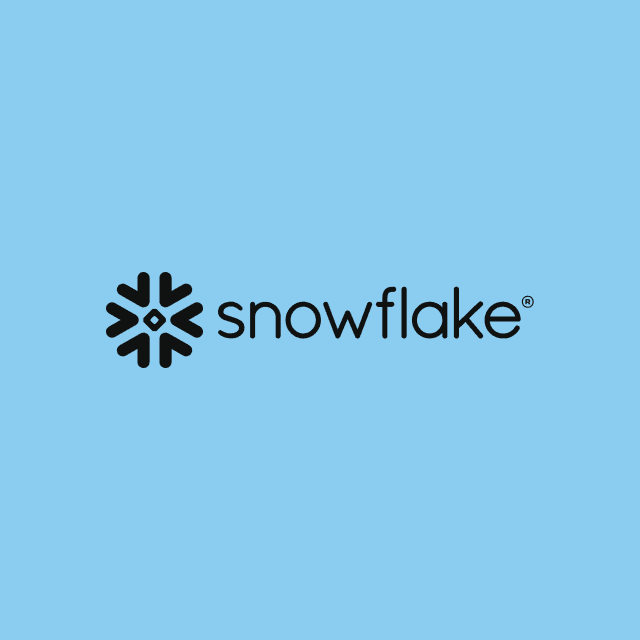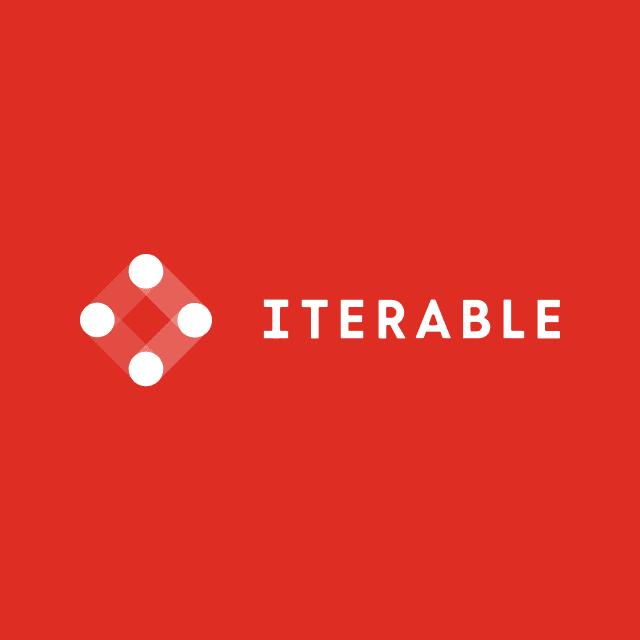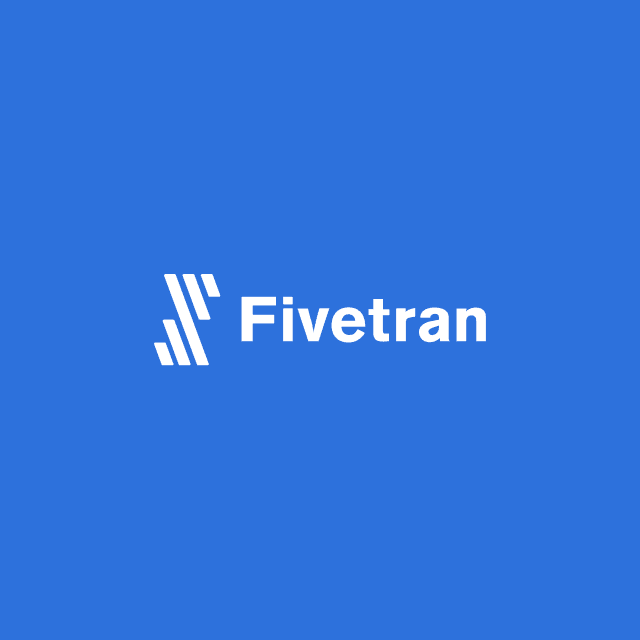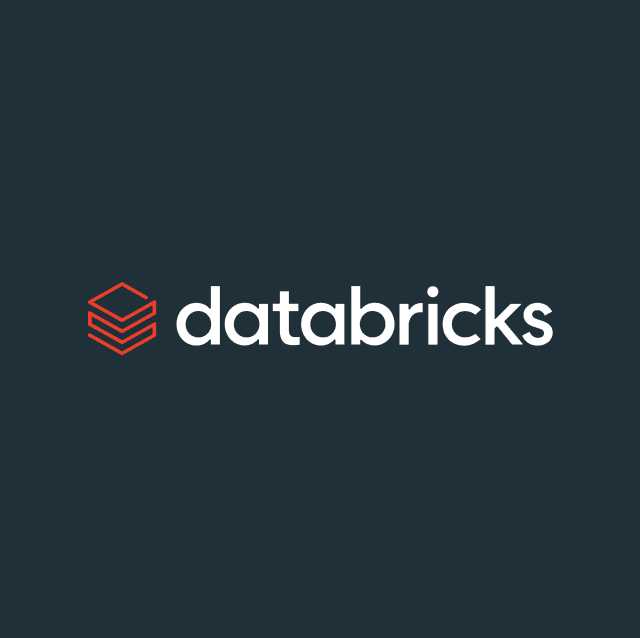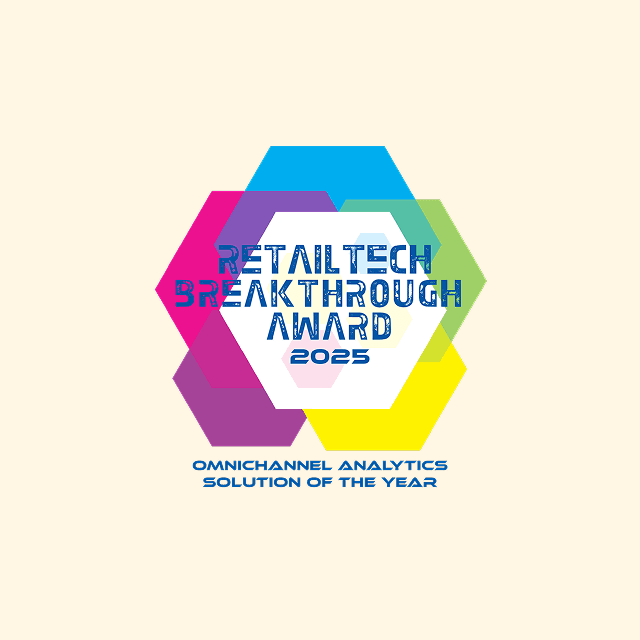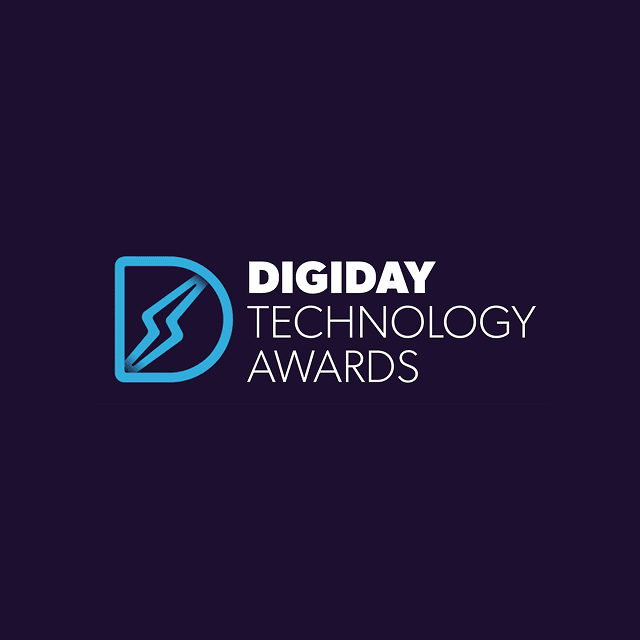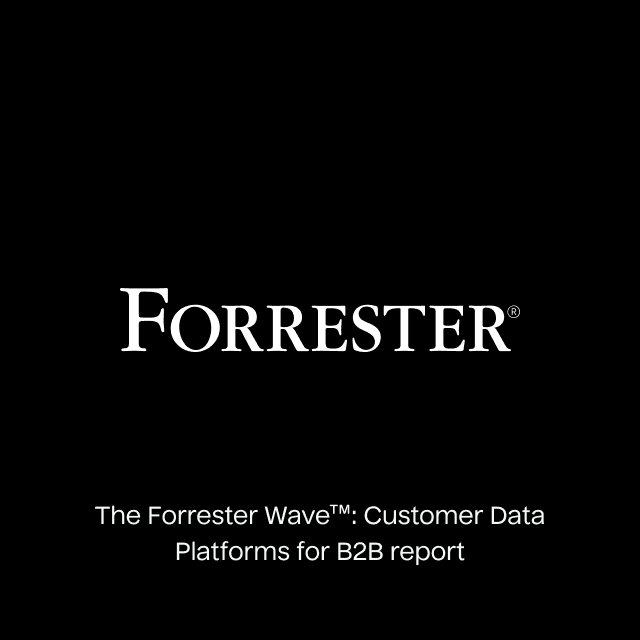Imagine being able to target exactly who you want with personalized advertisements. Knowing who you want to target is one problem, but uploading your audience segments to your ad platforms is another problem altogether, and this key challenge is the exact reason LiveRamp exists.
LiveRamp helps you build enriched audiences for marketing campaigns and automatically onboard your data to your ad platforms like Facebook and Google in the realm of AdTech.
To help you understand more how LiveRamp achieves this, this article will cover:
- What is LiveRamp?
- What problem does LiveRamp solve?
- How LiveRamp works
- Use cases
- Pros and cons
What is LiveRamp?
LiveRamp is a data onboarding platform that gathers a company’s online and offline customer data, maps the data to individual customer profiles, and uploads enriched audience segments to advertising platforms.
Customer data at most companies is usually fragmented. This becomes a problem as teams look to scale advertising programs because your ads are only as good as your target audience. Without a reliable way to create comprehensive audiences of ideal customers, you leave money on the table in your paid campaigns.
LiveRamp was founded in 2011 and created a solution to this problem that was better than the alternative of bad data and manual uploads. Since 2011, they have grown to be a billion-dollar company with a near monopoly on the data onboarding space. However, they have recently struggled to adapt their offerings to the new world of cloud data warehouses, and newer, more flexible, more affordable competitors have emerged.
Here’s how a former LiveRamp employee defines the company:
“LiveRamp is a classic middleware company. LiveRamp moves data between marketing applications.
Middleware companies are essentially just integration companies. They integrate a bunch of software vendors so they can move data across those software vendors. Middleware companies are very valuable because they tend to have extremely high utility to both their customers and partners (and often end up essentially owning a market).
The economics of a middleware company can look very similar to a B2B marketplace. Marketplaces have buyers and suppliers. It is hard to get the buyers without the suppliers … and vice versa. So they have a large cold start problem. But once they do get started, they have a super flywheel."
Give Your Ad Audiences a Powerful Match-Rate Upgrade
Worried about dropping match rates as cookies disappear? Hightouch Match Booster has you covered. By securely enriching your own data with trusted identity providers, you’ll finally bridge the gap between your warehouse and your favorite ad platforms. Skip the confusion—and start seeing higher returns on every campaign.
Ready to see the difference? Grab your free resource today and supercharge your ad targeting!


What Problem does LiveRamp Solve?
LiveRamp solves the “fragmented data” problem for paid marketing teams by creating a centralized database for all your customers and their corresponding behavioral data. The platform enables you to create segments and then upload audience cohorts to the advertising platform of your choice.
This data onboarding challenge is difficult for a few reasons. Firstly, merging the two into a usable customer profile is very difficult as you collect data from various sources, including offline and online. Companies often have multiple identifiers on different data points. For example, from your website data, you have a user ID; from your email data, you likely have an email address; from your offline data (e.g., an in-store purchase), you might have a phone number or a transaction ID.
To use this data, marketers need to be able to map this data to a single profile and create a behavioral log for each person. Without this, you can’t reliably build different audience cohorts for personalized advertising campaigns.
However, even if you can build audiences, you still need to sync them to your ad platforms. There are two major hurdles here.
- It’s a hassle to manually build a pipeline or upload CSVs to your ad platforms.
- When you upload an audience, not all the users match the profiles on the ad platform, which can reduce your audience size and, subsequently your ad efficacy as it relates to marketing spend.
This multi-faceted problem is exactly what LiveRamp seeks to solve.
How Does LiveRamp Work?
There are three core components or factors you have to consider when using LiveRamp.
-
Upload Data: First, you must upload your offline and online customer data to LiveRamp. You must follow their strict file format to ensure no problems. Uploading can be done via SFTP, retrieved via an S3 or GCS bucket, or LiveRamp connect.
-
Identity Resolution: LiveRamp anonymizes your data and creates an identity graph through identity resolution, where your customer data gets merged into a single profile and receives a unique identifier called a RampID.
-
Data Activation: With a more comprehensive view of your customers, you can send your data to multiple platforms to help find new customers and increase targeting by creating campaigns with the right message based on your segmentation.

LiveRamp aims to help you merge your many customer data sources. Having data scattered across your business means you’d never have a complete view of a single customer, preventing opportunities for hyper-personalization.
There are a few major downsides to how LiveRamp works:
- LiveRamp is a black-box solution: You cannot see how identities are resolved or the logic that LiveRamp uses to match users.
- LiveRamp stores your customer data: Storing data in a third-party platform can introduce privacy and compliance risks for many companies.
- LiveRamp still has manual aspects: Despite trying to automate the data onboarding process, teams must still upload CSVs regularly to the platform or build complex integrations between their data infrastructure and Liveramp’s platform.
- LiveRamp is very expensive: Because LiveRamp stores your data, they incur the cost of that storage and have to pass it along to you in your contract cost.
Core Features & Products
While LiveRamp has many different features and capabilities, the company offers four base products: Activation, Authenticated Traffic Solution, Data Marketplace, and Identity Infrastructure.
Activation
LiveRamp offers a data activation product where you can send customer data to downstream destinations without creating or maintaining your integrations. The solution works by connecting the destination you wish to send data to, typically via an OAuth connection, and selecting the created audience segments to send to your end destination. LiveRamp offers over 600 destinations like Google Cloud, Amazon, and TikTok.
One thing to note is that this process can take between one and three days. This time delay is a large blocker for fast-moving marketing teams who want to test quickly. A pain point raised by LiveRamp customers is the inflexibility of the LiveRamp audience management features. You’re unable to edit existing audiences. Instead, you must consistently rebuild audiences and reconfigure them in ad platforms whenever you want to change your targeting.
Authenticated Traffic Solution
Authenticated traffic solution (ATS) allows publishers to identify customers securely in real-time and present advertisements that would be relevant to them. It's a perfect solution to create audiences without needing third-party cookies or mobile identifiers, ideal for third-party cookie deprecation.
When a user signs up for something on your website, like a newsletter, their information is collected. This information, or identifier, is then processed by a system known as ATS, which converts it into a secure, encrypted form. This encrypted form is called an identity envelope and contains a special RampID identifier.
Only certain Supply-Side Platforms SSPs equipped with LiveRamp Sidecar can decrypt these envelopes. When the user visits a part of the website with advertisements, the SSP uses the Sidecar to decrypt the envelope and obtain the RampID. This RampID is then sent in bid requests to Demand-Side Platforms (DSPs), platforms representing advertisers.
These DSPs use the RampID to identify the user and make bids to display their ads to the user. The DSP with the highest bid wins, and its advertisement is displayed on the user's website.
The benefit of ATS is that it protects PII throughout the programmatic advertising supply chain via RampID, reducing any privacy concerns with your data.
Data Marketplace
The LiveRamp Data Marketplace allows you to buy and sell marketing data. You can create segments of the data you wish to sell and add them to the marketplace for other companies to use. You can also purchase data if your customer dataset is incomplete or unavailable. This access to third-party data will help enrich your customer data with more data points, unlocking new actionable insights and segmentation options for your marketing campaigns.
If you want to sell data on LiveRamp, you can upload datasets directly to the storefront, where data buyers can then request specific segments and invoice you for their usage. Buying data is as simple as selecting the segments you want to buy, which you can find by searching keywords, phrases, or segment IDs. You are charged only when you activate the segments you select. The price varies depending on the pricing model chosen.
Identity Infrastructure
LiveRamp also offers identity resolution, where the platform deterministically matches all of your offline and online customer data into a single customer profile. The platform uses a unique identifier called RampID to help connect and recognize a user across different digital platforms and devices in a privacy-conscious way. The identifier of a customer is resolved into LiveRamp’s identity graph, which is used to create a unified view of your customers and resolve their identities.
LiveRamp Use Cases
One of the main reasons you’d turn to a company like LiveRamp is to enhance the impact of your data. There are several use cases that LiveRamp can help you achieve, which include:
- Identity Resolution: Resolving identities across various platforms and devices, giving you a unified view of your customers.
- Audience Targeting and Segmentation: Targeting specific audience segments more accurately, personalizing your marketing strategies and increasing customer engagement.
- Data Collaboration and Sharing: Sharing data with partners safely and securely.
- Enhancing Match Rates: Improving match rates when sending audiences to advertising platforms.
- Data Activation: Sending your custom audiences to over 600 destinations to enable omnichannel marketing.
- Data Storage: Uploading your customer into LiveRamp for a single location to store all your customer data. This one location can help with data activation and analysis. But it doesn’t have access to all your customer data.
- Data Monetization: You can sell your data through the data marketplace. Depending on how many customers use your data, you can upload specific segments you wish to sell and get paid.
Pros & Cons of LiveRamp
One of LiveRamp's biggest advantages is that the platform is well-known and very established. However, the length of a company's running does not indicate quality. So, with that in mind, here is a list of the biggest pros and cons of LiveRamp.
| Pros | Cons |
|---|---|
| Helps increase match rates to ad platforms | Expensive |
| Well-known brand name | Poor UI |
| Multiple product offerings | Limited to LiveRamp’s identity resolution algorithm |
| Ability to sync data to ad platforms | Stores your sensitive data |
| Matches offline and online data | Your identity graph is owned and managed by LiveRamp |
What Alternatives Are There to LiveRamp?
Several competitors in the market offer various data connectivity, management, and analytic features. Some of these alternatives include:
- Hightouch: Hightouch is a Composable CDP platform that offers solutions such as identity resolution and Match Booster. Identity resolution helps resolve all your customer data, data from your SaaS tools, and internal databases. Hightouch’s identity resolution provides a solution that is configurable and clear on how it works, unlike other solutions. Match Booster enriches the data you send to downstream destinations with additional user identifiers to increase match rates on your advertising platforms. Match Booster doesn’t require you to upload any CSVs. It's enabled directly on whatever syncs you have set up in Hightouch already. It’s more secure as no data is stored within Hightouch, as Match Booster enriches your data when it is in transit. Match Booster is highly observable and configurable, as you can see the performance of each sync, review the match rates, and adjust settings as required.
- TransUnion TruAudience: TruAudience is a similar platform to LiveRamp. It offers identity resolution, audience segmentation, data activation, analytics and measurement, and a data clean room. One of its unique features is its credit marketing solutions, which provide insights into credit-eligible customers who are more likely to respond and actively shop.
- Experian: Similar to TransUnion, Experian started as a credit reporting service before introducing a data solution. Experian is mainly a data provider and can provide enrichment plus industry-specific data points to help companies build more robust user-profiles and aid in building an identity graph.
- Epslion: Similar to LiveRamp, Epsilon is a platform that will store your data and, in return, help resolve identities and sync data to ad platforms. The upside of Epsilon is its strong reporting features. However, they have a limited number of supported integrations.
- Throttle: Throttle is a great tool specifically built for the healthcare industry. It has many healthcare-specific features. The only technical limitation of Throttle when implementing their solution for healthcare companies is the fact they also store customer data, which is a large compliance hurdle.
LiveRamp FAQs
Here are some of the most common questions people ask when evaluating LiveRamp.
What Companies Use LiveRamp?
A diverse range of companies use LiveRamp across various industries, such as Ford Motor Company, Kimberly-Clark, Mindshare, The North Face, and Panasonic Corp. Companies in media and advertising, consumer packaged goods (CPG), retail, technology platforms are all users of LiveRamp. However, with more competition providing data onboarding solutions, LiveRamp no longer has a monopoly on the advertising world.
Is LiveRamp a CDP, DSP, or DMP?
LiveRamp is neither a customer data platform (CDP), a demand-side platform (DSP), or a data management platform (DMP). It describes itself as a data collaboration tool that helps unite all your customer data and provides deep insights into your customers to create more effective advertising campaigns.
LiveRamp isn’t a CDP because it doesn’t focus on collecting, modeling, and storing that data. LiveRamp can send your data to downstream tools, but a CDP has a much broader scope of destinations you can send data to, such as email service providers, CRMs, and finance tools.
LiveRamp isn’t a DSP, as a DSP is a system that allows you to buy digital advertising inventory and manage multiple ad exchanges and data exchange accounts through one interface. A DSP focuses more on the automated buying of digital ad space.
LiveRamp is also not a DMP. A DMP collects, organizes, and activates large data sets, especially third-party data, mainly for advertising purposes. Its main aim is to segment audiences and target customers more effectively in advertising campaigns.
Is LiveRamp a Data Provider?
LiveRamp enables you to connect and activate your first-party data effectively but does not primarily supply it. It helps businesses leverage their existing data more effectively. It can facilitate access to third-party data through its extensive network of partners, but its core function is more about data management and integration rather than direct data provision.
Final Thoughts
Even though LiveRamp is a commonly used solution for data onboarding and identity resolution, it isn’t ideal, especially with the development of new technologies that offer better solutions.
If you’re looking for a cheaper, more flexible alternative to LiveRamp that offers more granularity around identity resolution and better match rates, book a demo with one of our solutions engineers to learn how you can implement Hightouch and replace LiveRamp.




